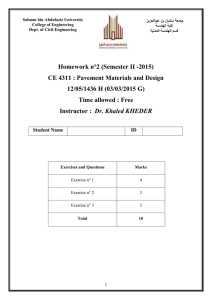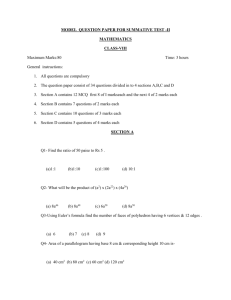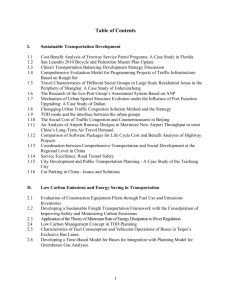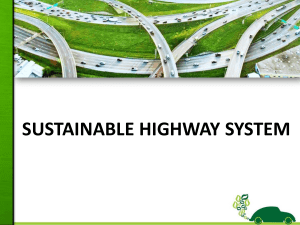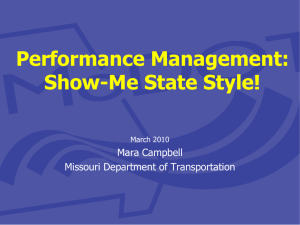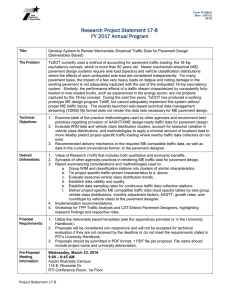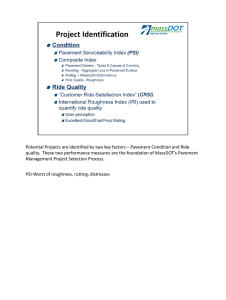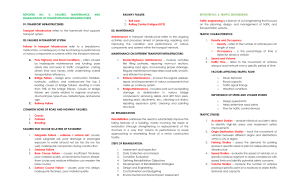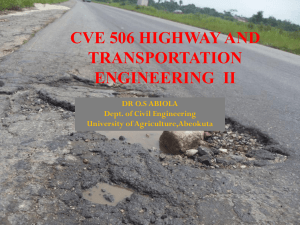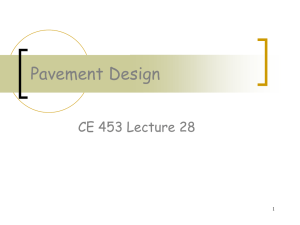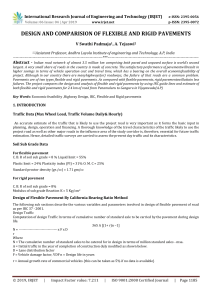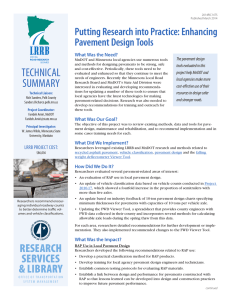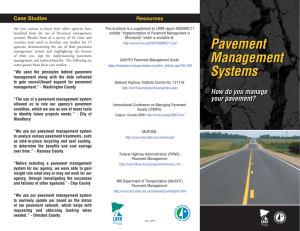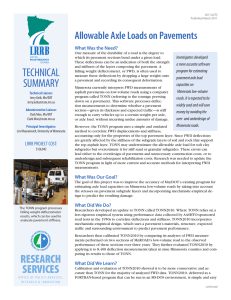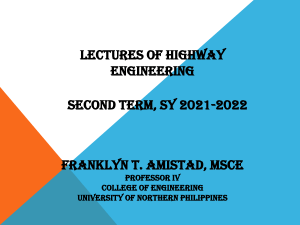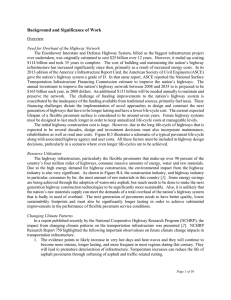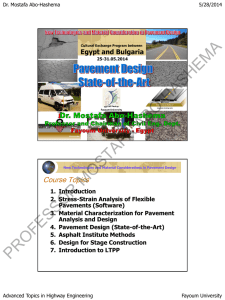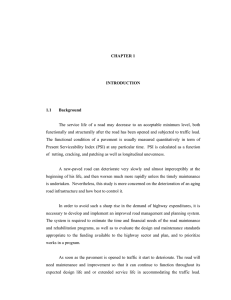Reg. No. ______ Karunya University (Karunya Institute of
advertisement
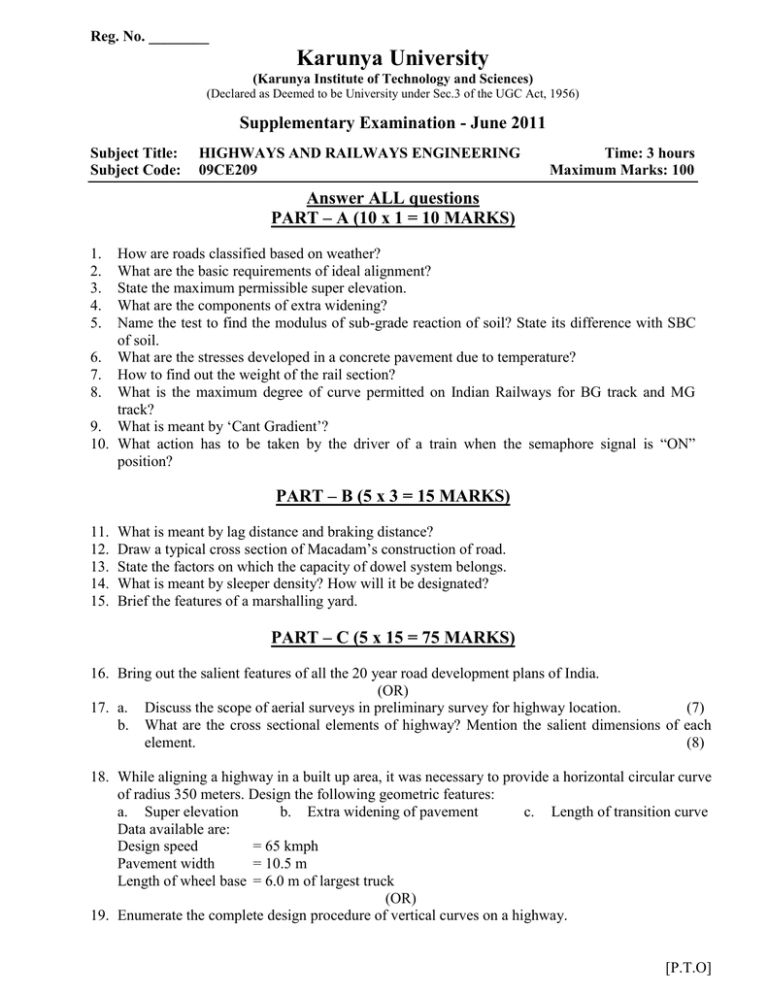
Reg. No. ________ Karunya University (Karunya Institute of Technology and Sciences) (Declared as Deemed to be University under Sec.3 of the UGC Act, 1956) Supplementary Examination - June 2011 Subject Title: Subject Code: HIGHWAYS AND RAILWAYS ENGINEERING 09CE209 Time: 3 hours Maximum Marks: 100 Answer ALL questions PART – A (10 x 1 = 10 MARKS) 1. 2. 3. 4. 5. How are roads classified based on weather? What are the basic requirements of ideal alignment? State the maximum permissible super elevation. What are the components of extra widening? Name the test to find the modulus of sub-grade reaction of soil? State its difference with SBC of soil. 6. What are the stresses developed in a concrete pavement due to temperature? 7. How to find out the weight of the rail section? 8. What is the maximum degree of curve permitted on Indian Railways for BG track and MG track? 9. What is meant by ‘Cant Gradient’? 10. What action has to be taken by the driver of a train when the semaphore signal is “ON” position? PART – B (5 x 3 = 15 MARKS) 11. 12. 13. 14. 15. What is meant by lag distance and braking distance? Draw a typical cross section of Macadam’s construction of road. State the factors on which the capacity of dowel system belongs. What is meant by sleeper density? How will it be designated? Brief the features of a marshalling yard. PART – C (5 x 15 = 75 MARKS) 16. Bring out the salient features of all the 20 year road development plans of India. (OR) 17. a. Discuss the scope of aerial surveys in preliminary survey for highway location. (7) b. What are the cross sectional elements of highway? Mention the salient dimensions of each element. (8) 18. While aligning a highway in a built up area, it was necessary to provide a horizontal circular curve of radius 350 meters. Design the following geometric features: a. Super elevation b. Extra widening of pavement c. Length of transition curve Data available are: Design speed = 65 kmph Pavement width = 10.5 m Length of wheel base = 6.0 m of largest truck (OR) 19. Enumerate the complete design procedure of vertical curves on a highway. [P.T.O] 20. a. b. 21. a. b. Differentiate between rigid and flexible pavements. (8) Explain the concept of equivalent Single Wheel Load. (7) (OR) Explain the limitations of CBR method of flexible pavement design. (7) Design the dowel bars and tie bars for a rigid pavement of a two lane road. The construction joints are 4 metres apart and expansion joints are 10 panels apart. Thickness of the slab is 23cm. Assume any other required data suitably. Construction temperature = 23°C, maximum temperature = 52°C, expansion joint space = 2.5 cm, co-efficient of friction = 1.2, allowable tensile stress in concrete = 0.8 kg/cm2, allowable tensile stress in tie bar=1800kg/cm2 and allowable bond stress in concrete = 24.6 kg/cm2. (8) 22. Draw a typical cross section of B.G. single track in embankment and in cutting and mark its components and dimensions. (OR) 23. Discuss the pros and cons of various kinds of sleepers. 24. How are stations classified? Bring out the salient features of each station type. (OR) 25. Write short notes on the following: a. Points and Crossings b. Track Circuiting c. Railway Signals
